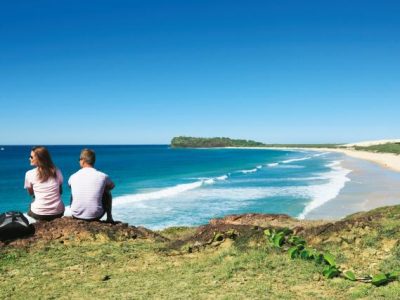FRASER ISLAND or KGARI

Fraser Island (pc: australia.com)
It is now 41 years since I first set foot on Fraser Island also known as Kgari. The occasion was the Fraser Island Environmental Inquiry established by the then Prime Minister and Minister for Environment, Gough Whitlam, on 12 July 1975, under the new Environment Protection (Impact of Proposals) Act 1974-75. In fact I was the first person to be subpoenaed under this Act to appear before such an Inquiry. This meant the Australian National University which then employed me was able to effectively dispense with my services for a period at the pleasure of the two Commissioners, John Hookey and Arthur Hicks.
The purpose of the Inquiry was to assess environmental aspects of the making of decisions by and on behalf of the Australian Government in relation to the exportation from Australia of heavy minerals (especially rutile and zircon) from Fraser Island. Of interest, the Inquiry forwarded its recommendation to the new Fraser Government after events of 11 November 1975 with the first report being sent to the new Minister for Environment, Andrew Peacock on 1 December, 1975. This report recommended amongst other things that Fraser Island be recorded as part of the National Estate. Later decisions by this Government led to the cessation of mining on Fraser Island and eventually to the Island receiving World Heritage status in 1992.
It is a great story told many times, but from my perspective would not have been possible without the incredible efforts of . It was John who gathered the Inquiry team, media and others like me to the Island in mid-1975. He had established FIDO, the Fraser Island Defence Organisation, now referred to as the “watchdog of Fraser Island”. John was able to show us the highlights of island landforms and ecology having spent years before wandering all around with family and friends. He had brought together a like-minded group determined to prevent miners from desecrating the dunal landscape. But it came at great cost. Many in the local community were supportive of mining as was the then Queensland Government. As a result there was personal conflict and great community tensions. John continued on relentlessly and today edits MOONBI, the newsletter of FIDO. I have recently received MOONBI 133 which keeps me informed of the current work of this organisation as it struggles to protect the island’s natural integrity and World Heritage values.
My role at the 1975 Inquiry was to offer the Commission an outline of the island’s geomorphology from both an Australian coastal and global context. It was not an easy task seeing that this was my first visit! However, I had several advantages: first, I was reasonably familiar with coastal literature at the time; second I was engaged in coastal research to the south; and third, the mining company and the Queensland Government had decided not to take part in the Inquiry so I did not get cross-examined. It was a grand opportunity to inspect the dunes of different ages with their distinctive soil and vegetation patterns so well described later by Cliff Thompson and others. I felt very privileged to help the Commissioners understand some of these matters backing up the fine interpretations of Sinclair.
In recent years I have advocated that part of Kgari be dedicated as a science reserve. The dunes are sensitive to environmental shifts as seen from its long history. Much could be made of detailed monitoring of its natural assets to see how it is responding to climate change. I can see quite a number of sensitive places that are likely to change condition over time. In the meantime it is pleasing to hear that the ARC is supportive of more detailed geomorphic work in providing funds to Shulmeister, Hesp, Graziela Miot da Silva and others. New dating and other techniques should enable expansion of the knowledge base that has accumulated since the 70s.
John Sinclair has stated that FIDO, now 45 years old, is changing its role from advocacy to more on-ground work and collaborating with other groups and agencies to achieve better outcomes; there is so much to do on Kgari and interested readers should consult the FIDO website, www.fido.org.au, on impacts of tourism and other pressures and what can be done to improve management processes and practices.
Words by Prof Bruce Thom. Please respect Bruce Thom’s thoughts and reference where appropriately: (c) ACS, 2016, posted 17th April 2016, for correspondence about this blog post please email admin@australiancoastalsociety.org.


 South Australian Recreation Fishing Review
South Australian Recreation Fishing Review